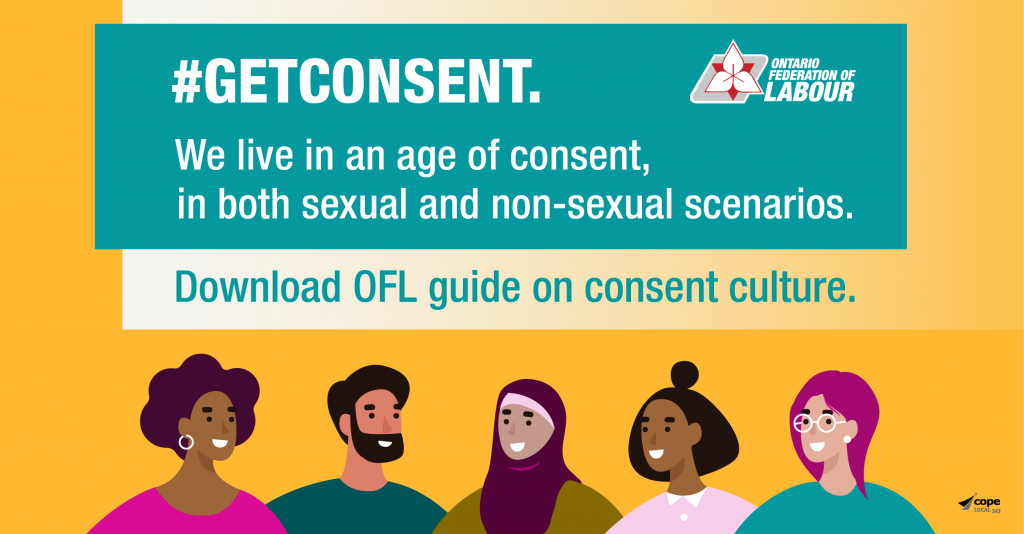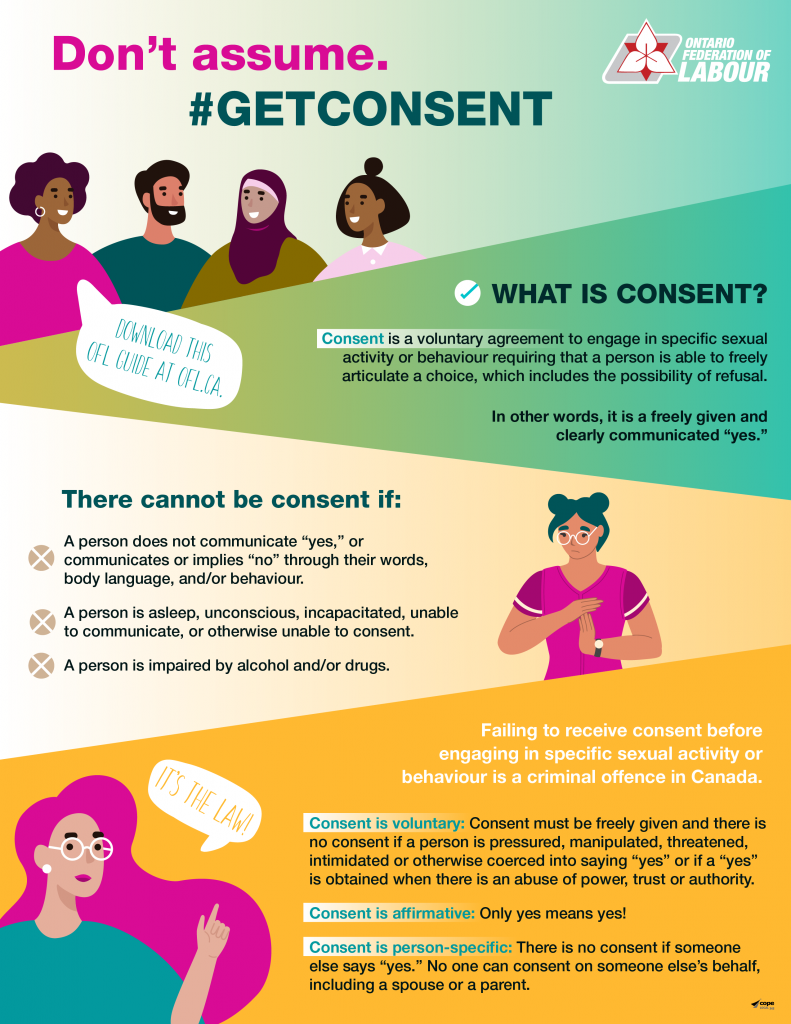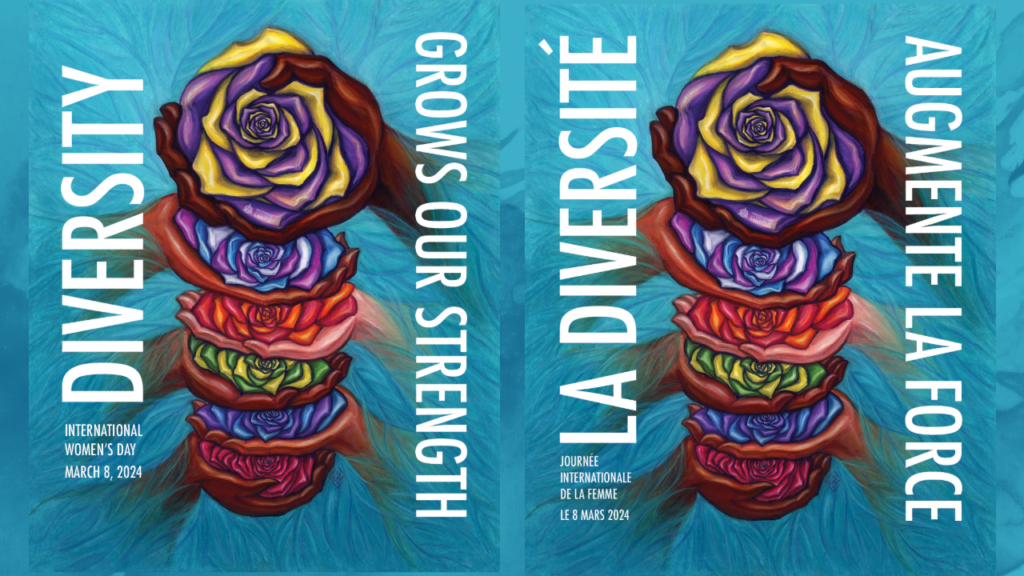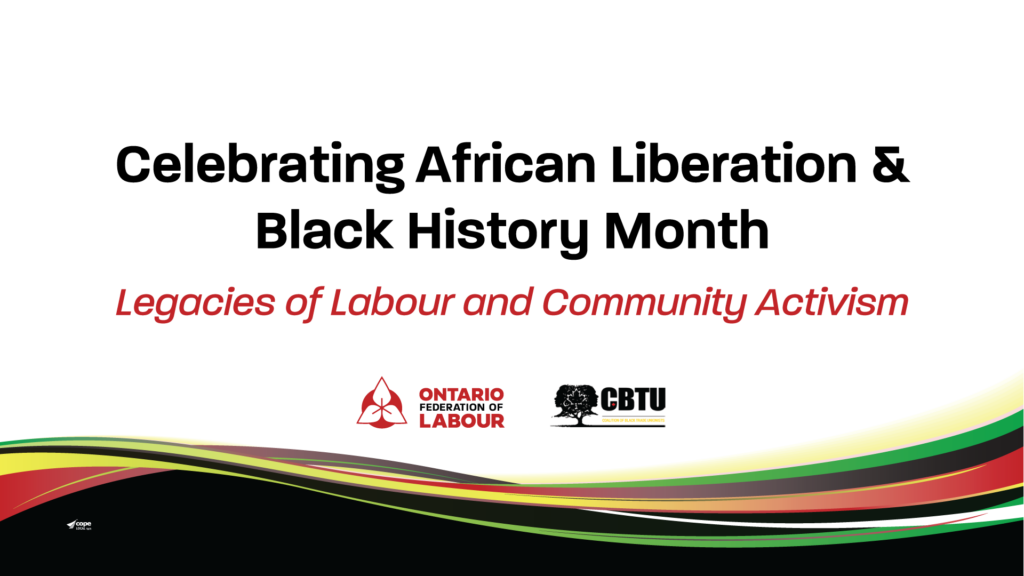

The Ontario Federation of Labour is pleased to launch its #GetConsent guide.
The #GetConsent resource aims to educate and remind us of our role in creating a culture of consent, in sexual and non-sexual situations.
What is consent?
Consent is a voluntary agreement to engage in specific sexual activity or behaviour requiring that a person is able to freely articulate a choice, which includes the possibility of refusal. In other words, it is a freely given and clearly communicated “yes.”
Did you know…
Failing to receive consent before engaging in specific sexual activity or behaviour is a criminal offence in Canada. According to the Canadian Criminal Code:
- Consent is voluntary: Consent must be freely given and there is no consent if a person is pressured, manipulated, threatened, intimidated or otherwise coerced into saying “yes” or if a “yes” is obtained when there is an abuse of power, trust or authority.
- Consent is affirmative: Only yes means yes! Consent is actively communicated by words, body language and other forms of communication in the moment. If a person is not communicating “yes,” or if they say or imply “no” through words and behaviour, there is no consent.
- Consent is person-specific: There is no consent if someone else says “yes.” No one can consent on someone else’s behalf, including a spouse or a parent.
- Consent is conscious: A person is incapable of consenting if they are unconscious, asleep, or impaired by drugs or alcohol.
- Consent is ongoing: Everyone has the right to change their mind and withdraw consent at any time before or during sexual activity.
Each person must give consent every time, in sexual and non-sexual situations, whether in a one-time encounter or a long-term relationship.
Practice everyday consent
To create a culture of consent, we need to practice consent, and not just in sexual situations. Asking for consent for non-sexual touch, allowing children to choose whether or not to hug relatives, checking in before taking a picture or sharing a picture on social media, taking “no” for an answer instead of pressuring a friend to attend a party: these are all opportunities for us to ask about, listen to and respect other people’s boundaries.

Use your voice
We all have a role to play in creating a culture of consent. You can use your voice in small ways every day to contribute to positive change. This can include talking about the realities of sexual violence with friends and family, challenging victim-blaming or pointing out examples of rape culture. Share what you have learned about the issue with others, ask questions and be open to ongoing learning and dialogue.


